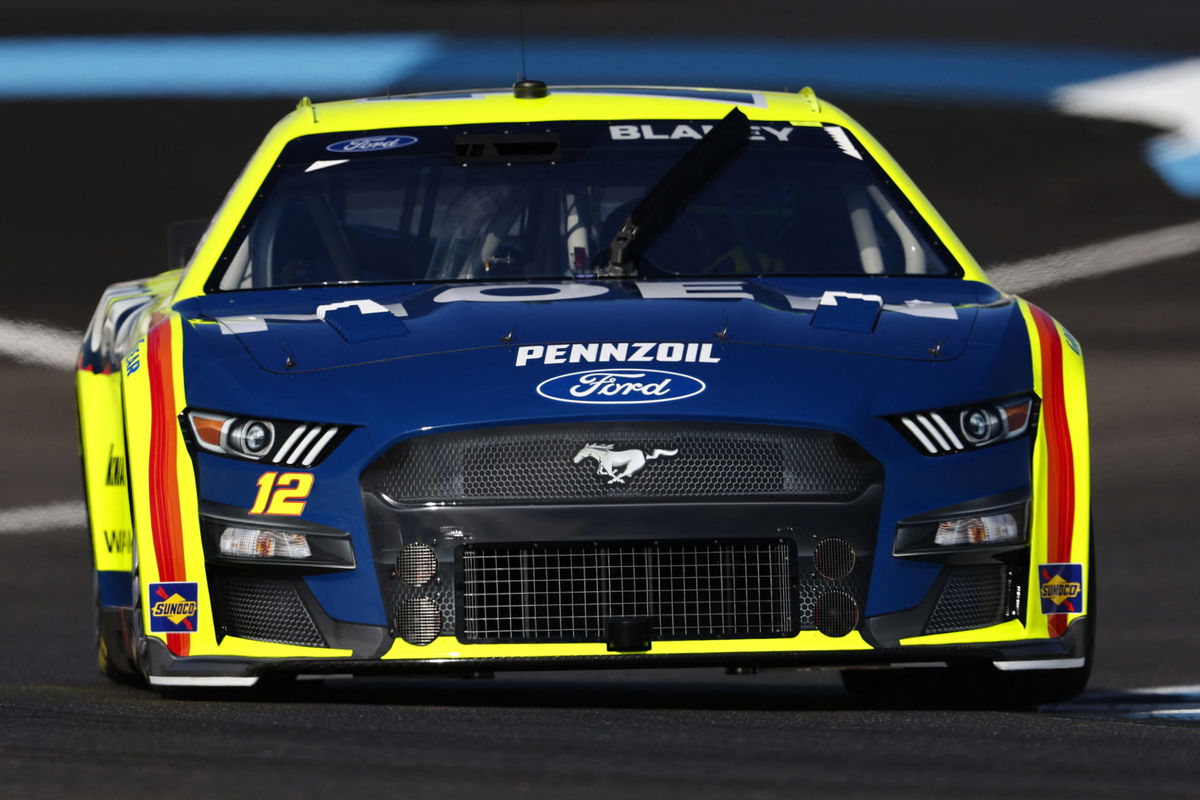
USA Today via Reuters
Jul 30, 2022; Speedway, Indiana, USA; NASCAR Cup Series driver Ryan Blaney (12) during practice at Indianapolis Motor Speedway Road Course. Mandatory Credit: Mike Dinovo-USA TODAY Sports

USA Today via Reuters
Jul 30, 2022; Speedway, Indiana, USA; NASCAR Cup Series driver Ryan Blaney (12) during practice at Indianapolis Motor Speedway Road Course. Mandatory Credit: Mike Dinovo-USA TODAY Sports
In NASCAR, the battle isn’t just about drivers swapping paint or teams outfoxing each other on pit road. Instead, it’s a full-blown arms race between manufacturers with deep stakes in every race and championship. The brands on the hood matter as much as the names above the window. For years, Chevrolet, Toyota, and Ford have treated the Cup Series as the ultimate proving ground for speed, technology, and future talent.
Watch What’s Trending Now!
As the 2025 season roars past its halfway mark, sharp-eyed fans have started noticing not just who’s winning, but why they’re winning and what each manufacturer is doing to sustain their edge. Lately, talk in the garage and among fans has focused on the new wave of rising stars powering Toyota and Chevy to the top of the standings. Meanwhile, Ford, once a factory of elite drivers, seems stuck trying to refill an empty bench. There’s a simmering sense that Ford’s current struggles with nurturing talent could spark a bigger problem in the years to come.
ADVERTISEMENT
Is the NASCAR Ford bench too thin?
Ford’s ongoing struggles in NASCAR’s talent pipeline have sparked industry concern. Notably, Chevrolet and Toyota have produced a wave of new stars through structured, well-funded efforts that directly benefit their Cup Series operations. Toyota’s strategy is a model of success. The 2025 Toyota Driver Development (TD2) program features a deep roster of young talent, including current standout Cup drivers like Ty Gibbs, who has already netted several wins.
Then, there are rising prospects such as Corey Heim and Jesse Love. Toyota’s partnership with teams like Joe Gibbs Racing and Venturini Motorsports gives these drivers top-tier equipment. It allows for seamless advancement from ARCA to Trucks and Xfinity, then up into Cup rides. Chevrolet’s pipeline is equally potent.
Through partnerships with powerhouse organizations such as Hendrick Motorsports and JR Motorsports, Chevy regularly promotes Truck and Xfinity winners. Think of Carson Hocevar and Zane Smith (after a stint with Ford), for instance. They are now straight into competitive Cup Series seats. And, most importantly, making a mark! These manufacturer-backed programs ensure that the best young drivers receive ample track time, world-class coaching, and access to the latest technology.
ADVERTISEMENT
Ford, meanwhile, faces a glaring lack of developmental depth. In 2025, Ford has no talent grooming of their own. Either they have relied on personalities like Hailie Deegan and Frankie Muniz, who bring buzz but not results. Or have picked up leftovers of Toyota and Chevrolet, and not groomed talent of its own. The likes of Heim and Hocevar are going to lead the Toyota and Chevy banner, but Ford will be forced to rely on Wood Brothers or other team to find their next talent. Team Penske with the likes of Ryan Blaney and Joey Logano have been dominating in the Next Gen era, but for how long? And even if they wanted to mix things up and bring in new talent, they do not have good enough options.

Imago
MARTINSVILLE, VA – MARCH 24: 10: Aric Almirola, SHR, Ford Mustang SHAZAM! / Smithfield battles 14: Clint Bowyer, SHR, Ford Mustang Mobil 1 / Rush Truck Centers during the 70th Annual running of the STP 500 Monster Energy NASCAR Motorsport USA Cup Series race on March 24, 2019 at Martinsville Speedway in Martinsville, VA. (Photo by David J. Griffin/Icon Sportswire) AUTO: MAR 24 Monster Energy NASCAR Cup Series – STP 500 PUBLICATIONxINxGERxSUIxAUTxHUNxRUSxSWExNORxDENxONLY Icon9531903240535500
Fans have been vocal about Ford’s approach regarding developmental talent. Some argue Ford’s path forward must lean harder into recruiting and developing new talent, emulating Toyota’s aggressive and cohesive TRD approach. Others say there’s logic in investing in proven veterans who deliver stability and leadership. As things stands, there’s no new Brad Keselowski or Chris Buescher rising through the ranks.
ADVERTISEMENT
Overall, there is criticism for the lack of initiative in having their own developmental program. With rivals steadily minting the next generation of winners, Ford’s lack of a thriving development pipeline could have long-term consequences for its NASCAR future.
Top Stories
Another Almost Fatal Disaster Surfaces From Statesville Airport Amidst Ongoing Greg Biffle’s Crash Investigation
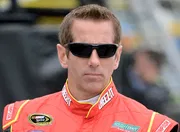
The Retirement Question – What Happens if Kyle Busch Fails in 2026?
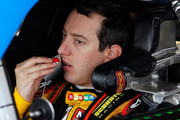
What Is NASCAR’s 5-Strike Rule That Could Change Its Future? Check All Details Here
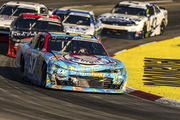
When NASCAR Didn’t Wait: Dale Earnhardt’s Injury Comeback Came With the Hot Seat of Zero Sympathy
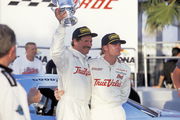
Dale Jr’s CARS Tour’s Powerful Greg Biffle Tribute Has NASCAR Fans Making One Emotional Demand
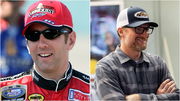
ADVERTISEMENT
Ford’s short-term fix, long-term gamble in NASCAR
Ford’s heavy dependence on its veteran lineup has begun to show cracks in 2025. It has exposed a larger vulnerability as rival manufacturers gain ground with youthful stars. The results this season tell the story. Joey Logano, Ryan Blaney, and Austin Cindric have each managed only a single win in the first half of the year.
Now, this is an underwhelming haul for Team Penske’s supposed powerhouse trio. Gone are the days of Ford domination. Penske’s drivers have rarely set the pace this year. Recent races have featured more struggles and missed opportunities than flashes of the old dominance.
After back-to-back NASCAR championship seasons (Logano in 2024, Blaney in 2023), Ford’s top names have not shown the consistency or winning edge expected from series champions. Aside from Cindric’s dramatic photo-finish win at the Jack Link’s 500, Blaney’s triumph at the Cracker Barrel 400, and Logano’s late charge at the Wurth 400, Ford entries often find themselves mid-pack as the laps wind down. Blaney and Buescher are the only two Ford drivers sitting inside the top 10 spots in the points standings so far this season.
ADVERTISEMENT
This overreliance on a select group of NASCAR Cup veterans creates a precarious scenario. Suppose that Logano, Blaney, or Cindric were to explore opportunities with rival teams. Or even if they pursue a hiatus from the sport (due to injury or personal reasons). In that case, Ford would have no proven young drivers waiting in the wings to fill the gap. The lack of a well-developed, high-performing talent pipeline is a well-documented weakness.
As Chevy and Toyota continue to mint new Cup contenders through aggressive driver development, Ford’s aging core and shallow bench amplify the risk of a long-term slide from contention. Unless Ford finds stronger solutions, their short-term fix of leaning on veterans could become the catalyst for a much steeper decline in seasons to come. And we hope it doesn’t turn out to be true.
ADVERTISEMENT
ADVERTISEMENT
ADVERTISEMENT
ADVERTISEMENT

